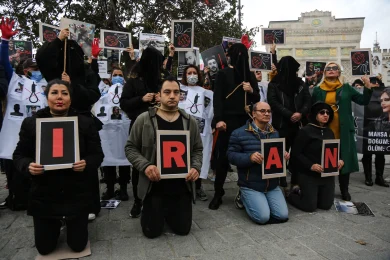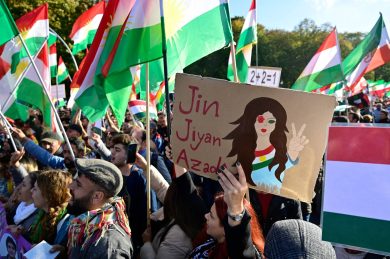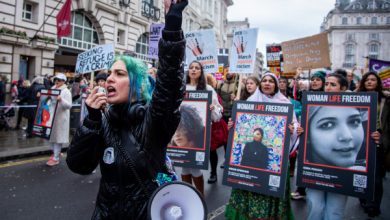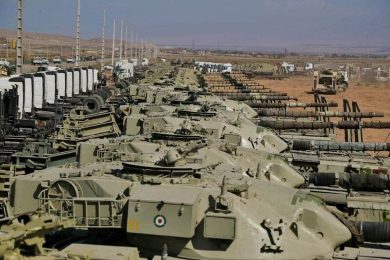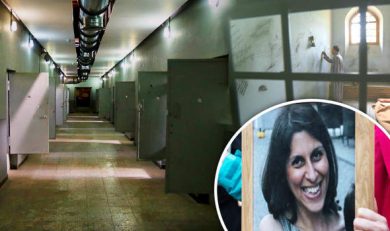Nestled in the foothills of Tehran’s Alborz Mountains lies a fortress that has come to symbolize the darkest realities of the Islamic Republic: Evin Prison. To outsiders, it appears as just another high-security facility. But for generations of Iranians—activists, journalists, students, women, ethnic minorities, and dual nationals—it is a place of nightmares, a symbol of repression, and a graveyard of dreams.
Operated in large part by the Islamic Revolutionary Guard Corps (IRGC) and its intelligence wing, Evin has become synonymous with torture, forced confessions, solitary confinement, and silence. It is where political prisoners are “disappeared,” where interrogations blur into physical and psychological torment, and where dissent is broken in body and spirit.
This article takes readers inside Evin’s walls—not through official tours or regime propaganda, but through the testimonies of those who survived it, the families who waited outside its gates, and the history that forged its terror.
1. A Prison Born of Revolution
Evin Prison was built in 1972 under the Shah’s regime as a modern detention center. It was used to hold political prisoners from communist and Islamic opposition groups, including some who would later become officials in the Islamic Republic.
After the 1979 revolution, the new clerical regime repurposed Evin as its own center of repression, and quickly filled it with monarchists, secularists, liberals, leftists, Kurds, Baha’is, and later, anyone who dared challenge the new order.
By the 1980s, Evin had become a site of mass executions. The most infamous wave came in 1988, when thousands of political prisoners were summarily killed in a series of secret tribunals—many buried in unmarked mass graves.
2. Inside the Walls: Layout and Control
Evin Prison is divided into multiple wards, each serving a specific purpose:
• Ward 209: Controlled by the Ministry of Intelligence; used for political prisoners.
• Ward 2A: Operated directly by the IRGC; known for extreme isolation and brutal interrogations.
• Ward 240: A less-known wing, often used for solitary confinement.
• Women’s Ward: Holds female political prisoners, often subject to gender-based violence.
• General Population: Where criminal and drug-related cases are held—but sometimes used to punish political detainees.
Surveillance is constant. Cameras are everywhere. Conversations are monitored. Even the walls, survivors say, seem to listen.
3. Arrival: From Arrest to Disappearance
Arrests often happen without warrant. Most political detainees are taken in night raids, blindfolded, and brought to Evin without any legal process.
Common Experience:
• Families are not notified.
• Phones are seized; access to lawyers denied.
• Some detainees are held incommunicado for weeks or months.
• Forced confessions are extracted under extreme pressure.
The goal is not justice. It is compliance—confession, repentance, and silence.
4. Torture as Routine, Not Exception
Evin is notorious for its use of physical and psychological torture.
Methods Reported:
• Beatings with cables and batons
• Prolonged sleep deprivation
• Waterboarding and stress positions
• Threats against family members
• Mock executions
• Long periods of solitary confinement—sometimes lasting months
Many detainees suffer permanent physical damage. But the scars that remain are often psychological: PTSD, anxiety, and fear that never fully fades.
5. Women in Evin: Double Punishment
For women, Evin holds a special horror. Gender-based abuse is widespread and systematically used as a tool of repression.
Documented Abuses:
• Strip searches and sexual humiliation
• Rape and assault during interrogations
• Denial of menstrual products and medical care
• Threats of public shaming or “virginity testing”
• Forced televised confessions under duress
Activists like Sepideh Qoliyan, Atena Daemi, Yasaman Aryani, and many others have spoken out after release about the gendered cruelty they endured.
6. Dual Nationals: Bargaining Chips in Diplomatic Chess
The Iranian regime frequently imprisons dual nationals in Evin to use as leverage in international negotiations.
High-Profile Cases:
• Nazanin Zaghari-Ratcliffe (UK): Accused of espionage; held for nearly 6 years.
• Baquer and Siamak Namazi (U.S.): Father and son detained under vague charges.
• Ahmad Reza Jalali (Sweden): Academic sentenced to death; allegedly used in prisoner swap negotiations.
Most are held in Ward 209 or 2A, interrogated for months, and used in media propaganda to project national security paranoia.
7. The Role of the IRGC
The IRGC’s Intelligence Organization is the de facto authority within Evin’s political wards.
What They Do:
• Decide who is detained and for how long.
• Conduct interrogations without oversight.
• Run parallel judicial systems through Revolutionary Courts.
• Operate their own torture chambers, independent from prison authorities.
In essence, they act as judge, jury, and jailer, with little to no transparency.
8. The Trial That Isn’t: Revolutionary Courts
After weeks or months of abuse, prisoners are brought before Revolutionary Courts—kangaroo tribunals with no due process.
Common Features:
• Trials lasting under 15 minutes
• Judges aligned with the IRGC
• Charges like “propaganda against the state,” “spreading corruption,” or “enmity against God”
• No independent lawyers allowed
• Sentences ranging from lashes and fines to execution
Justice in Evin is not blind. It is weaponized.
9. Hunger Strikes, Resistance, and Defiance
Despite the brutality, Evin has also been home to incredible resistance.
Examples:
• Hunger strikes by prisoners like Atena Daemi and Narges Mohammadi to protest inhumane conditions.
• Secret letters smuggled out, exposing abuse.
• Songs, poems, and artwork created in cells to preserve identity and hope.
These acts are small rebellions in a system built to erase.
10. Fires, Leaks, and the Cracks in the Wall
In October 2022, during the peak of the “Woman, Life, Freedom” protests, a massive fire broke out in Evin.
• Multiple wards were affected.
• Gunfire was heard from inside.
• State media downplayed the incident; families were left in the dark.
That same year, a hacker group known as Edalat-e Ali (Ali’s Justice) leaked security footage from inside Evin, showing:
• Guards beating prisoners
• Inmates collapsing without medical aid
• IRGC officers mocking detainees
It was visual confirmation of what many had described for years—and a rare moment of public accountability.
11. Families at the Gates: Pain Without Closure
Outside Evin, every day, dozens of family members wait for news. They sleep on sidewalks. They bring food and clothes. They hold photos and plead with guards.
Many are arrested themselves for demanding justice.
Many die without ever seeing their children free.
For every prisoner, there is a circle of silent suffering outside those walls.
12. The International Response: Condemnation Without Consequences
Despite years of documented abuse, Evin remains open—and IRGC officers continue to enjoy impunity.
What’s Missing:
• No global sanctions targeting IRGC prison officials specifically.
• No international tribunal or UN investigation into Evin’s operations.
• Dual nationals still being arrested and exchanged without accountability.
Statements of “grave concern” do not stop torture.
Only action does.
13. A Symbol of a System
Evin is not an anomaly. It is the blueprint.
Other prisons—Fashafouyeh, Rajaee Shahr, Qarchak—follow the same patterns. The IRGC has embedded its authority in Iran’s entire penal system.
But Evin stands apart because of what it represents:
The regime’s fear. The people’s courage. And the world’s failure—so far—to intervene.
Conclusion: A Future Without Evin
A free Iran will one day walk through Evin’s gates—not as prisoners, but as witnesses.
Its cells will be emptied. Its walls repurposed.
And its history—painful, shameful, but necessary—preserved as a memorial, not a weapon.
Join Our Newsletter!
Stay informed with the latest updates, news, and ways to take action in the fight for justice and global security. Sign up now to get updates delivered straight to your inbox!

